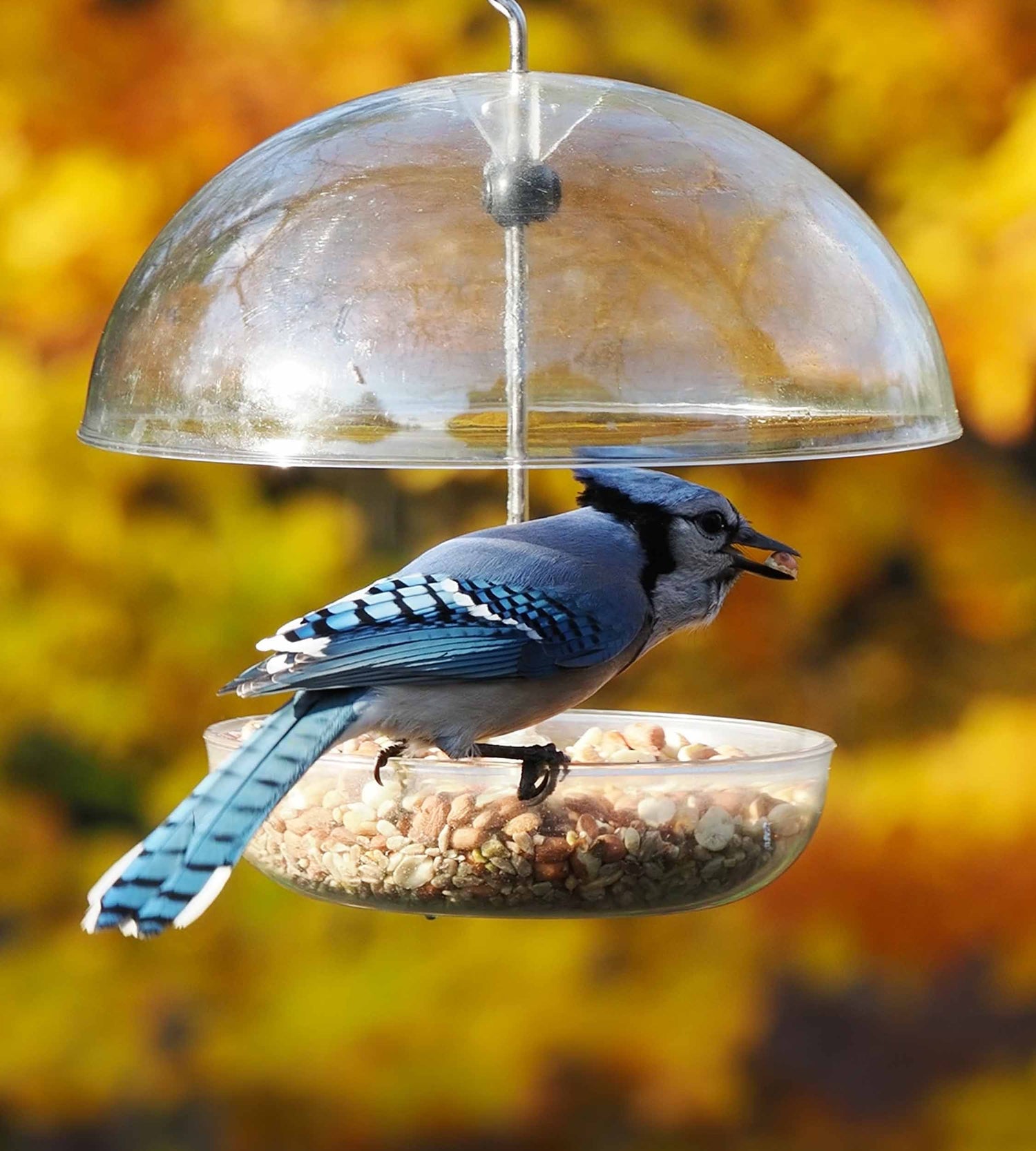Blue jays are a striking and spirited addition to any backyard birdwatcher’s paradise. With their vibrant blue plumage and distinctive calls, these birds are not only beautiful but also intelligent and social. If you’re looking to attract these birds to your yard, choosing the right bird feeder is crucial. In this article, we’ll explore the best bird feeders for blue jays, the types of food that attract them, and tips for setting up your bird feeding station.
Understanding Blue Jays
Before diving into the best feeders, it’s important to understand a bit about blue jays’ feeding habits and preferences. Blue jays are omnivorous, which means they enjoy a varied diet. They are known for their love of nuts, seeds, and suet, but they also appreciate the occasional fruit or insect.
Blue jays are larger than many common backyard birds, such as sparrows or finches. This means they require a sturdier feeder that can accommodate their size and weight.
Types of Bird Feeders for Blue Jays
When selecting a feeder for blue jays, consider the following options:
1. Platform Feeders
Platform feeders are an excellent choice for blue jays. These feeders provide a flat surface where blue jays can comfortably land and feed. The open design allows for easy access to a variety of foods, including seeds, nuts, and suet cakes.
Platform feeders can be mounted on poles or hung from trees, and they often come with a roof to protect the food from rain and snow. This type of feeder is versatile and can accommodate both large and small bird species.
2. Hopper Feeders
Hopper feeders are another great option for attracting blue jays. These feeders have a central reservoir that holds a large quantity of bird seed, which is dispensed onto a tray as birds eat.
Hopper feeders are typically made of wood or plastic and can be hung or mounted. They provide a sheltered area for food, keeping it dry and accessible. Blue jays are particularly fond of sunflower seeds, which can easily be dispensed from a hopper feeder.
3. Suet Feeders
Suet feeders are specially designed to hold suet cakes or suet balls, which are a favorite among blue jays. Suet is a high-energy food made from animal fat, often mixed with seeds or fruits.
These feeders are usually made of wire or plastic-coated cages that hold the suet in place. Suet feeders can be hung from branches or poles, and they attract not only blue jays but also other suet-loving birds like woodpeckers and nuthatches.
Best Foods for Blue Jays
Feeding blue jays involves more than just choosing the right feeder. You also need to provide the right food to attract them. Here are some of the best foods for blue jays:
Nuts and Seeds
Blue jays are particularly fond of peanuts, whether shelled or unshelled. Sunflower seeds, especially black oil sunflower seeds, are another favorite. Both of these options provide the high energy and fat content that blue jays need.
Suet Cakes and Suet Pellets
Suet cakes and pellets are a fantastic way to provide blue jays with a rich source of energy. You can find suet in a variety of flavors, often mixed with seeds, nuts, or berries to increase their appeal.
Fresh Fruit
While not as common, blue jays do enjoy fresh fruit on occasion. Apples, oranges, and grapes can be cut up and offered on platform feeders. Fruit provides natural sugars and moisture, making it a refreshing treat.
Mealworms
For a protein-rich option, consider adding mealworms to your feeding station. Live or dried mealworms can be placed on a platform feeder or mixed into suet cakes.
Setting Up Your Bird Feeding Station
To create an inviting space for blue jays, consider the following tips:
Location Matters
Position your feeders in a quiet, sheltered area where blue jays can feed undisturbed. Avoid placing feeders too close to windows, as this can lead to collisions.
Offer Variety
Providing a mix of foods will attract more blue jays and other bird species. Try combining nuts, seeds, suet, and fruit to create a diverse menu.
Keep It Clean
Regularly clean your feeders to prevent mold and disease. Remove any wet or moldy food, and wash feeders with warm, soapy water.
Be Patient
It may take some time for blue jays to discover your feeders, so be patient and consistent with your feeding efforts.
Tips for Encouraging Blue Jays
In addition to providing food, there are other ways to encourage blue jays to visit your yard:
Water Sources
Blue jays need access to fresh water for drinking and bathing. Consider adding a bird bath or a small pond to your garden.
Natural Shelter
Blue jays appreciate natural shelter, such as trees and shrubs, where they can perch and observe their surroundings. Planting native trees and bushes can create a welcoming environment.
Nesting Sites
Providing nesting sites can encourage blue jays to stay in your area year-round. Consider installing a nesting box or leaving dead trees (snags) for potential nesting sites.
Conclusion
Attracting blue jays to your backyard is a rewarding endeavor. By selecting the best bird feeders and providing a variety of foods, you can enjoy the vibrant presence of these beautiful birds. Remember to maintain your feeders and offer a welcoming environment, and soon, you’ll have blue jays visiting regularly.






